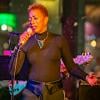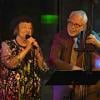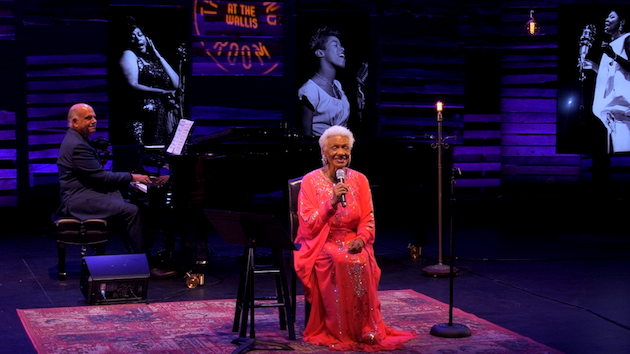
Los Angeles-based jazz and blues vocalist Barbara Morrison is just getting started. The three-time Grammy-nominated performer and record producer could be resting on the laurels of a more-than-60-year career that has had her appearing with Tony Bennett, Nancy Wilson, Ray Charles, Etta James, Dizzy Gillespie, James Moody, Johnny Otis, Terence Blanchard, Nancy Wilson, Mel Tormé, Keb’ Mo, and more.
Instead, Morrison in a phone interview says, “I’m still singing.”
Indeed, the twin themes she learned from her father — always follow through and it’s OK to use people but never to misuse people as you build a career — burn as brightly as ever. Morrison continues to perform; most recently recording Barbara Morrison: Standing on Their Shoulders, part of Southern California’s KCET public media station’s SOUTHLAND SESSIONS. (An encore presentation of the episode airs on PBS SoCal on Dec. 19 at 7 p.m.) The weekly KCET series showcases the rich culture and resilient diversity of the Los Angeles arts community. Morrison’s show, filmed at Beverly Hills’ Wallis Annenberg Center for the Performing Arts, pays tribute to Billie Holiday, Sarah Vaughan, Dinah Washington, and Ella Fitzgerald. Morrison’s performance is also available on demand on The Wallis’s website, part of the venue’s Sorting Room Sessions series.
During a year that includes the pandemic and social-justice unrest that ignited the Black Lives Matter movement worldwide, Morrison has continued to operate the Barbara Morrison Performing Arts Center and California Jazz & Blues Museum, two institutions she founded in Leimert Park, California. She is an Associate Professor of Jazz Studies in the Global/Ethnomusicology Department at UCLA.
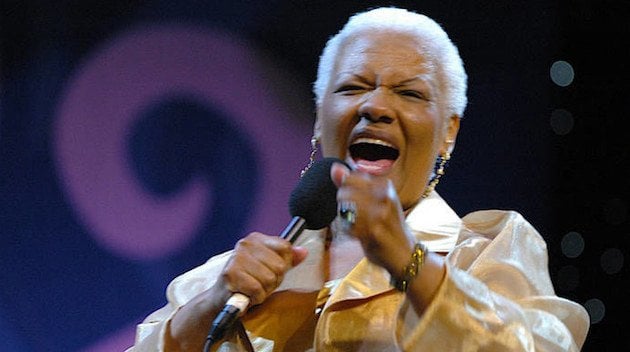
How are you weathering the impact of COVID-19?
It’s affected my business because I have a little theater and a museum and you’re not allowed to have people inside. But other than that, I’m doing ok. My diabetes is under control; I’m off insulin now. I shut down the museum, but I still have the theater going. They’re shooting a movie today using my theater and I’m trying to get everybody to be quiet so we can talk.
You were born and grew up in Romulus, Michigan, near Detroit, and close to the influence of Motown. Even though you are widely recognized as a jazz and blues vocalist, in what ways does your foundation in Motown, rock, gospel, and other styles inform your sound and who you choose to work with?
I grew up in Romulus, near the airport, but when I was real small, I was in Detroit with my aunt and uncle because my father was in Korea (in the military) and my mother was working in Detroit. When my father came out of the war and they married, we moved to Romulus. I won a scholarship to Eastern Michigan University and I moved to Ypsilanti and started going to Eastern. Then my father asked me what I wanted to do. I said I want to be a singer. He said, “You won’t be a singer. But I’ll support you, I’ll keep the family together, take care of your mom, sisters, and brothers, but I want you to know you can always come home.”
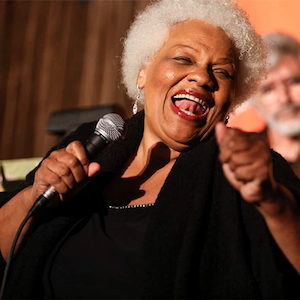
I drove to California. I financed a brand new 1972 Cougar and drove. After a few days there I was in a rock band called L.A. Smog Control with a great musician who worked with the Jackson Five. I loved R&B, Motown. Then I met a jazz-club man who was the same age as my father. I didn’t know he was a big star. I met [saxophonist] Eddie “Cleanhead” Vinson at the Rubaiyat [a prestigious jazz and R&B club in South Central L.A.]. He took me under his wing and said, “You better not be going to bed with none of them musicians.” He dogged me into being a good girl. One year, we went to Europe and I saw his name on a big mural with other big stars; Miles Davis, Gillespie, Count Basie. I couldn’t believe it.
I had wanted to be a Motown girl all my life. But they didn’t give me the time of day, but I got attention in the jazz world. Of course, it’s still a part of me. When I was 9 years old, I entered their contest on the radio — the first Black broadcasting station in the United States. I sang a Stevie Wonder song and got attention from the R&B community. Stevie comes over to see me sometimes, so we’re still going on.
The arts center and the California Jazz & Blues Museum during the pandemic: How are you keeping them going?
I got a loan from a friend and bought the streaming equipment to stream a show live. I let the children and people here in the community come in to do shows on my livestream. That’s the only way to get people to donate. I still have my job singing, and I also teach and have taught for about 28 years at UCLA. Those classes I Zoom now. I put personal income into the museum and theater too.
With the surging BLM movement and during this time in history, what are you observing in Black artists and other artists in your community? What are the roles, responsibilities, and opportunities for all artists to influence the future?
What is happening right now is a lot of denial. It’s a good word to use for the Black artists right now. They are in denial and that makes them a little more powerful. We’re not so busy concentrating on what people say we can’t do. We’re ignoring the stuff that says we can’t. We’re doing what we can do. We’re putting that can’t-do stuff on the back burner and not even listening to it.
I decided to come here to Leimert Park because it’s one of the richest Black communities in the country. The community and Black businesses are getting more attention and even the kids are doing more. We have the Harmony Projects for kids 5 to 15 years old: these kids are doing it. The school across the street from my school? A graduate of that school [who] graduated from the University of Michigan; his kids played on the Miles Davis soundtrack. Our music schools are getting through to the top.
Little kids, they don’t know color. They come to me, even little white kids and little Mexican kids, they come in and ask if it’s a place to be a musician. I take them into the museum and show that musicians can be all colors. To be a musician is not to be a person of color. It’s to be a person of the arts. These are underprivileged kids with no color. Black lives do matter, all lives do matter. We have white people walking down the street: they don’t care what color you are. They move to this community and now it’s beginning to look like a mixture of people of all colors. It’s all mixed up and it’s beautiful.
What is your role as a leader? What message are you putting out?
I don’t know if I have an answer. There are all kinds of role models around here. I’m a positive role model. I encourage people, I advise anyone to contribute something artistic to society. My father taught me to always follow through because you don’t know what will happen. He told me you use everybody you can, but don’t misuse anybody. And listen (to others), which is one of the hardest things for strong-headed people to do. Listen and choose and follow through, go all the way.
What career and life lessons did you learn from Etta James?
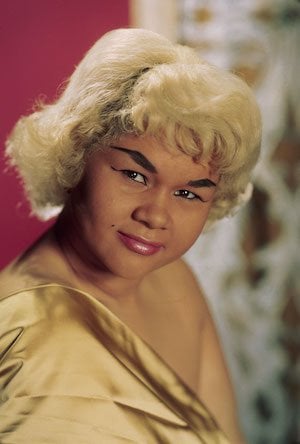
Don’t be jealous of nobody. Get out there and do your thing. She gained weight at one time, about 400 pounds, and she did not stop. Her attitude was, “Hey, I’m pretty good. Wait till you get like me and you’ll be all right.” She was cheesy like that.
There’s a picture of us together when we were working at the 1984 Olympics when Esther Williams died. We stopped in the middle of our program, put our hands together and we stood there. All three of us were discovered by Johnny Otis and Etta — her real name was James Etta and Johnny switched it around to Etta James. Johnny was from Oakland and everybody thought he was a Black man but he was a white man who married a Black woman. They didn’t discover he was white until he did a television show. He groomed me and Etta.
What about another artist of your choice?
Dinah Washington was my favorite. When I was a little girl, my father collected LPs and he’d play Dinah Washington LPs. I’d say, “Daddy, who’s that coming out of that box?” He would tell me about her. Dinah and I had similar relationships with our mothers. My mother was jealous of my relationship with my dad. I was the first child of six and the others didn’t come until I was eight years old. When he went to the war, she gave me away and when he came back, he found me. He found her and married her like he said he would. My mother was always just after me because me and my father were so close. Dinah, her mother didn’t like her either, just like me.”
The Standing on Their Shoulders program features songs performed by four legendary Black women. Will you tap on each of the four vocalists and mention the songs, connection or stories you’ll showcase?
Billie Holiday: She was resilient, [but] she didn’t have any direction. I read books and researched, and she didn’t have anybody to guide her through. Her mother was a cleaning woman. Billie was just misused a lot. My mother was a cleaning woman and a nurse and I could remember her picking up my paycheck when I got paid. In the show I do “Crazy He Calls Me” and “Them There Eyes,” one of the first jazz songs I learned in my life.
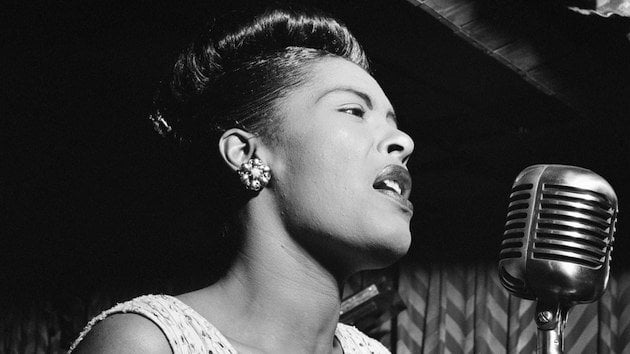
Sarah Vaughan: “Misty” and “Blue Skies,” I sing in the show. I was on the road and another musician invited me to his table, a man with little money, so I ordered a bottle of wine [and brought it to the table]. This woman’s hand reached over and poured a glass and she said, “What is this?” I looked over and I was sitting next to Sarah Vaughan and that’s how we became friends.
Dinah Washington: I’m singing “What a Difference a Day Made” and I chose it because she changed that song into “What a Difference a Day Makes. “She sang the wrong lyrics and her version became more famous than the original version.
Ella Fitzgerald: I sing “Someone to Watch Over Me” and I open the show with “I Love Being Here With You.” Ella, I didn’t know who she was when my father called me to say have you seen Ella yet? I said, “Daddy, who’s Ella?” And he said, “Baby you don’t know who Ella is?” He told me to be sure to see her and so when I was 23, I set out to see Ella. When I got there, the show was sold out. I saw a guy in the big band and told him it was sold out and he asked if I wanted him to get me in backstage. I said, “Yeah buddy.” I was so nervous I could hear my heart pounding. She told me George Shearing wrote a song called “Lullaby of Birdland.” I had asked her what was one of her favorite songs. She told me he wrote that song in 20 minutes. When she died, I started the Monday Night at Ella’s Pub series at the museum.
Increased diversity and more inclusion for underrepresented people in the arts are buzzword phrases, but what activities or awareness would you like to see happen to give those phrases meaning?
I would like for more Black people to learn about Willie Lynch and how we should treat each other. How he is still instrumental in our lives today. If more of them understood what those principles were and who he was, we would be able to create more decisions toward each other. We have a habitual bringing down of others. We need to build up [ourselves] as a whole race. And help each other more. That’s one of my wishes. I don’t know if I’ll live to see it. But the millennials don’t think like we think and it’s slowly happening. We have nice things going on in Leimert Park.



